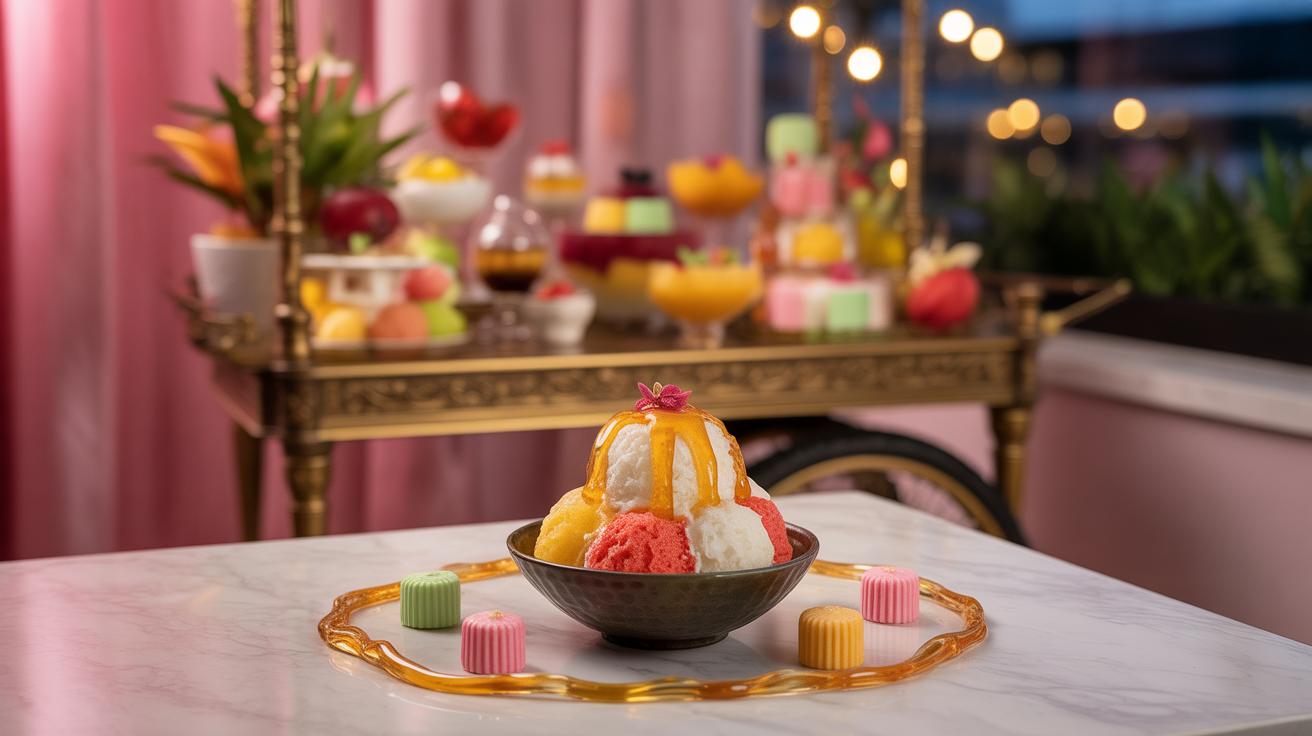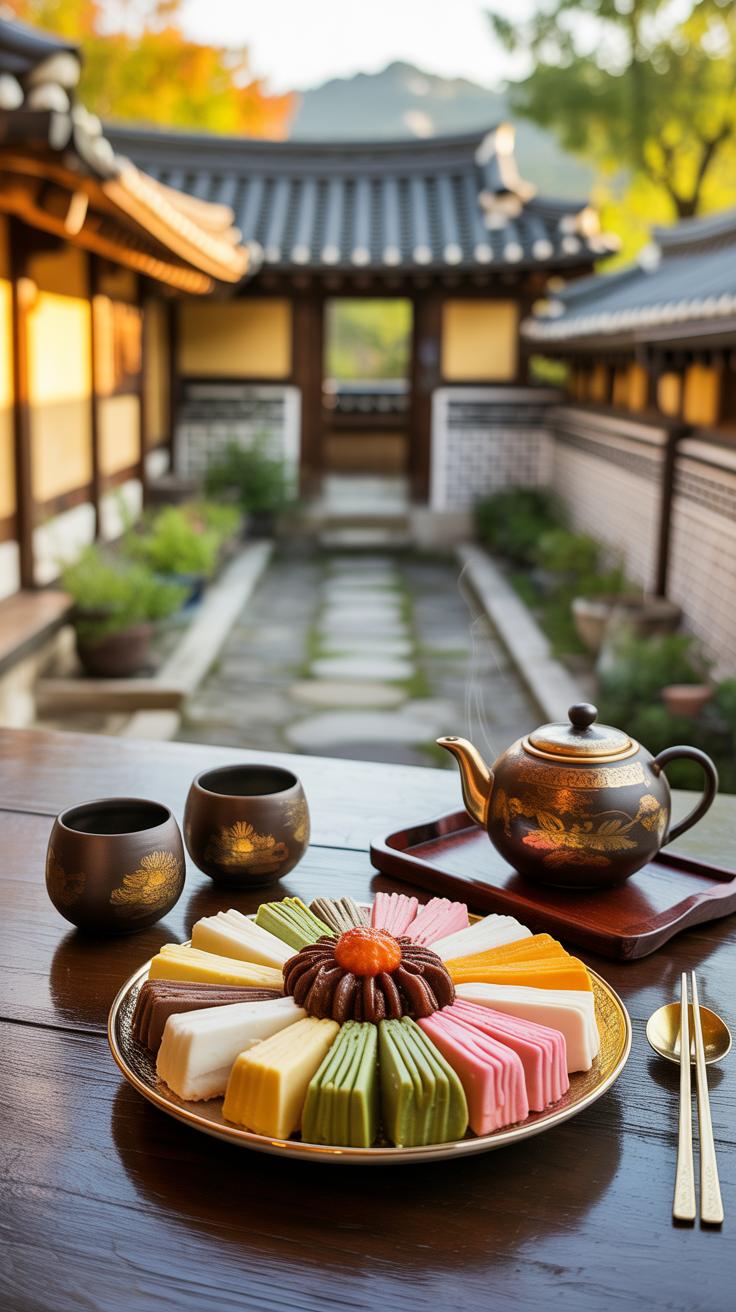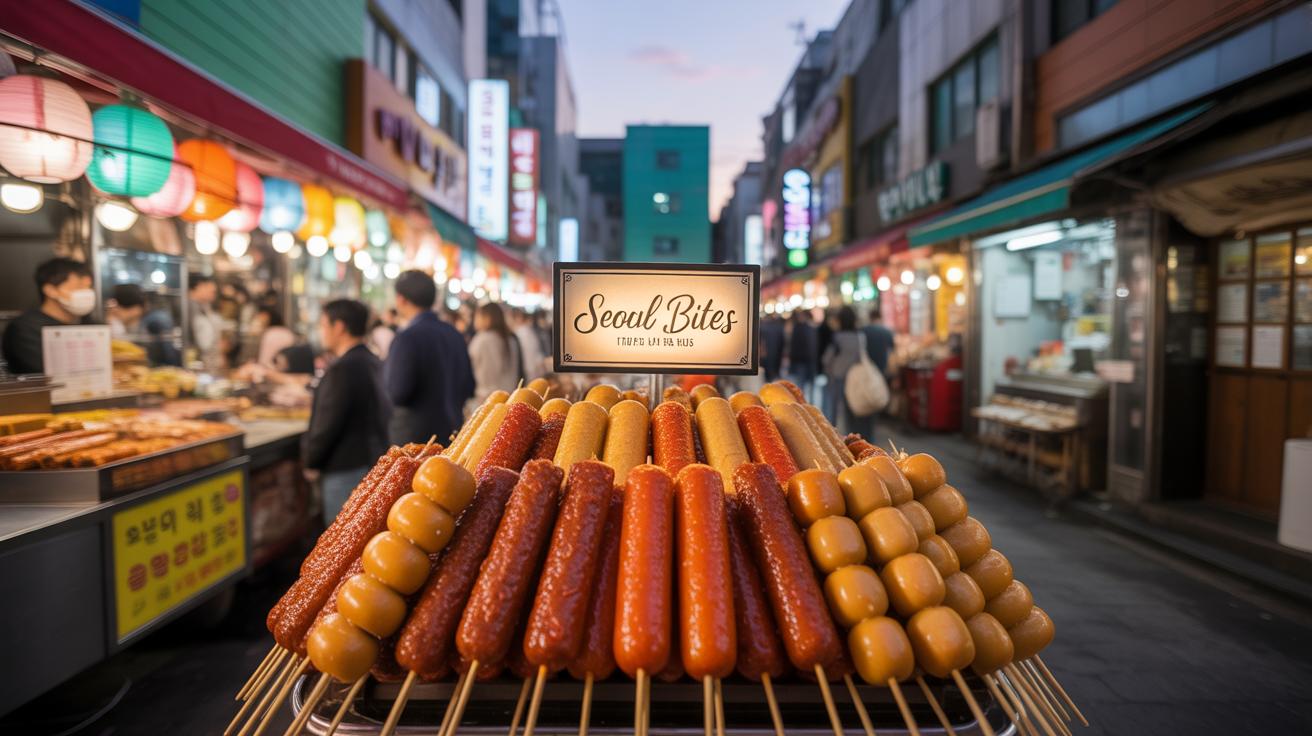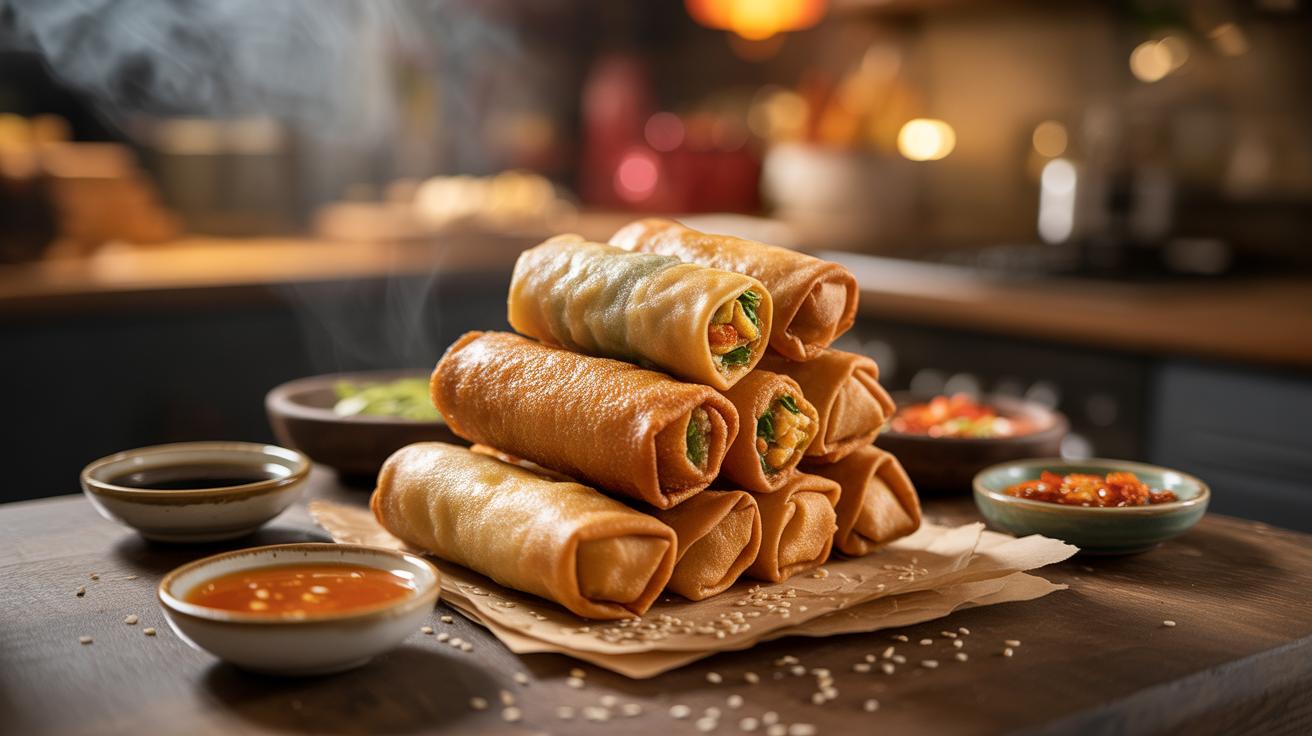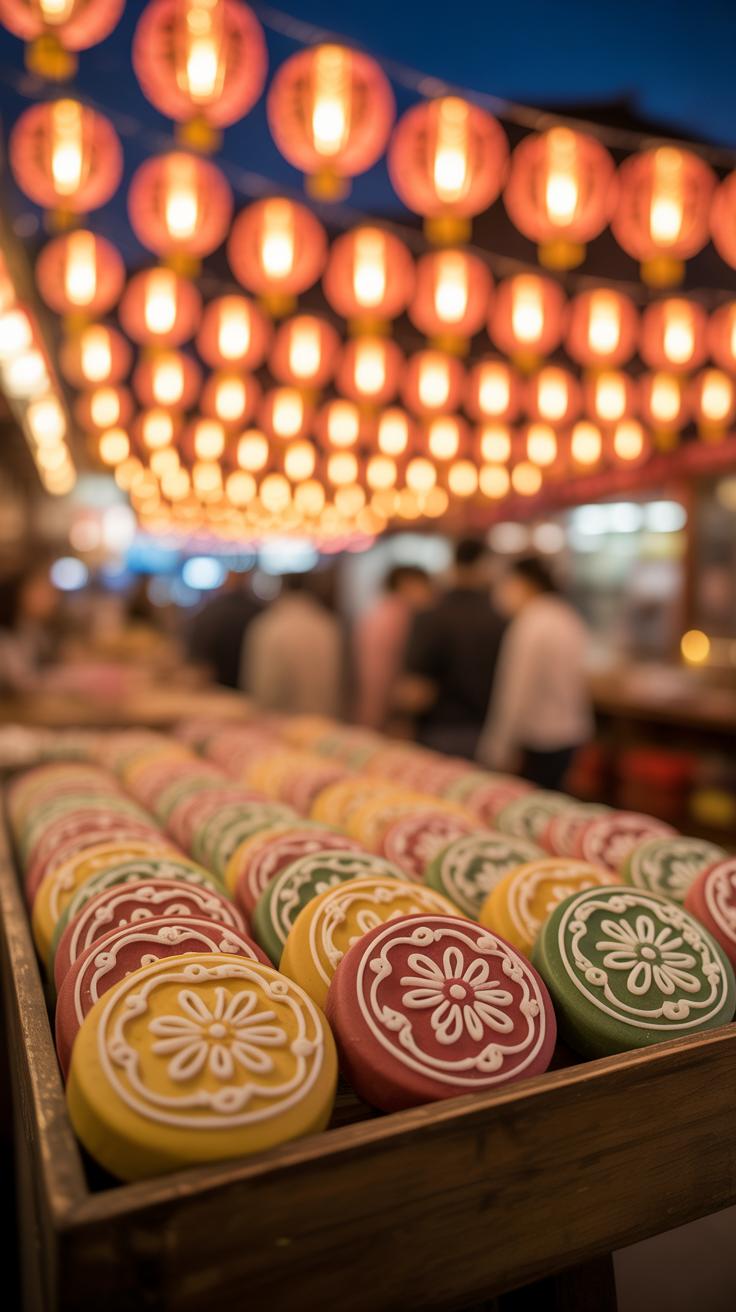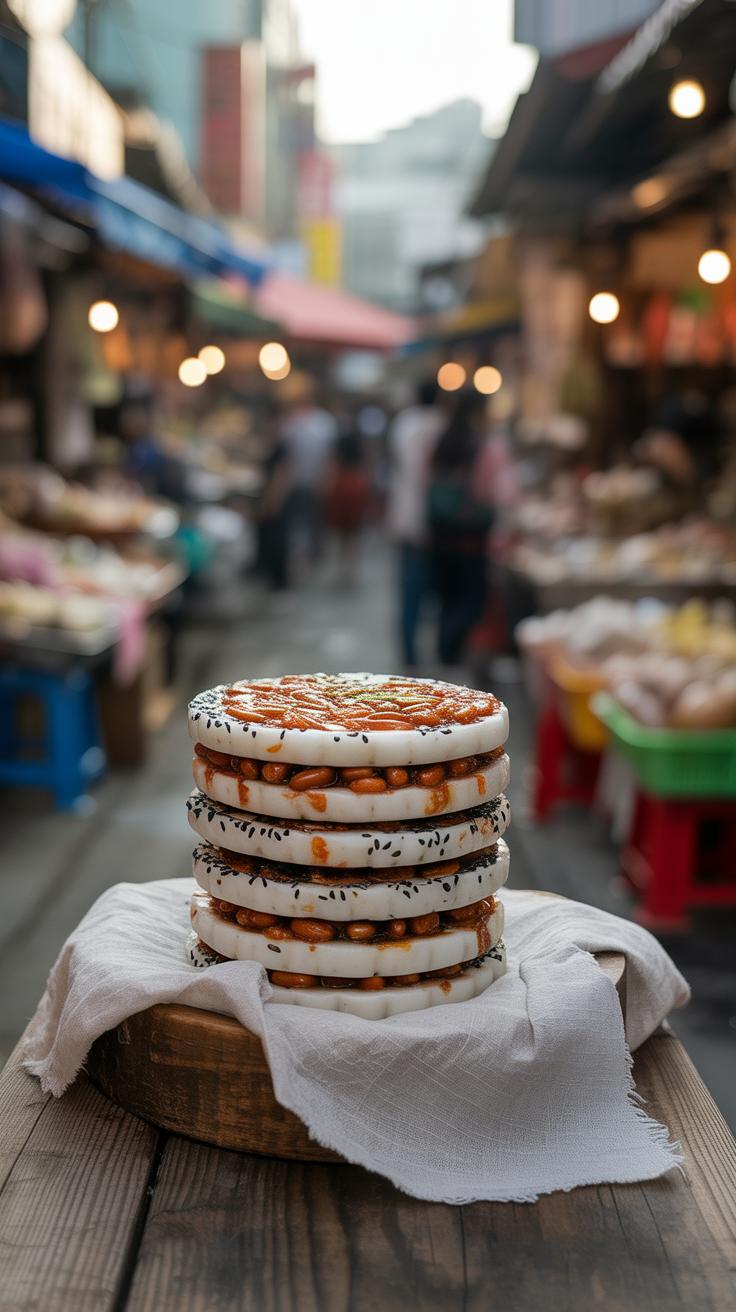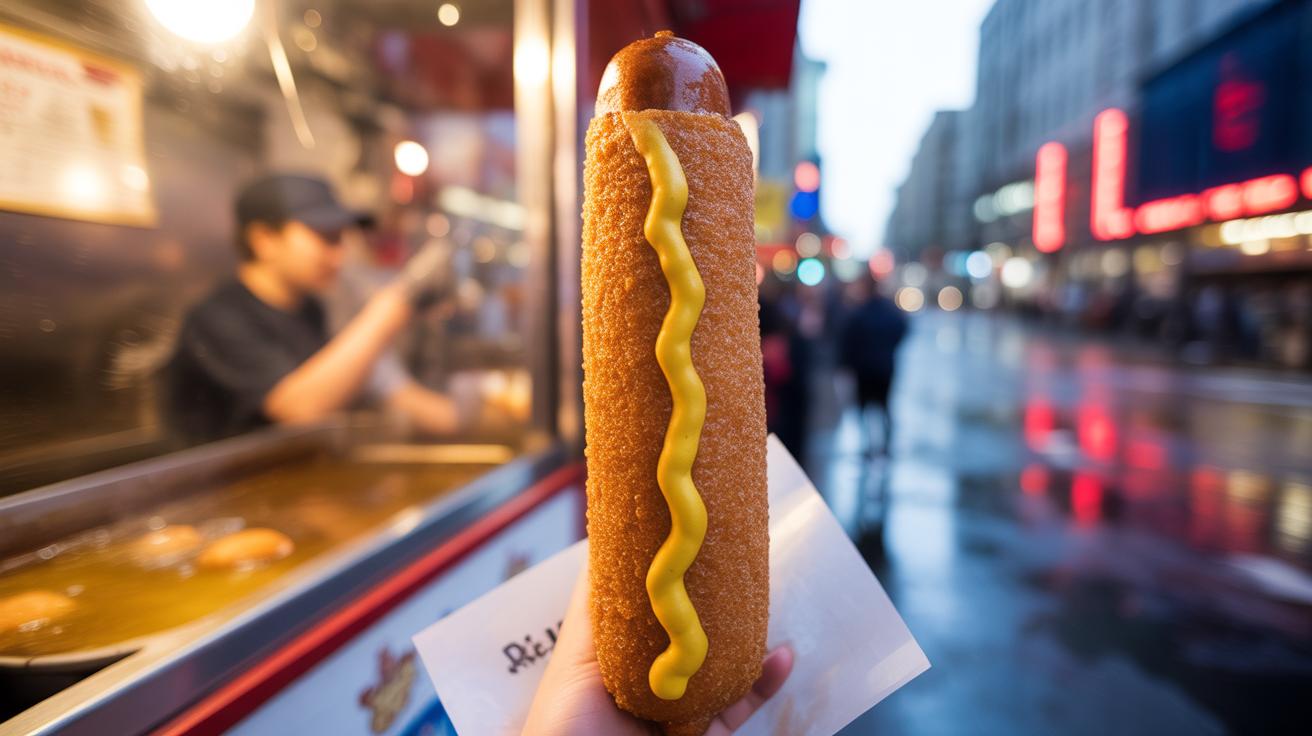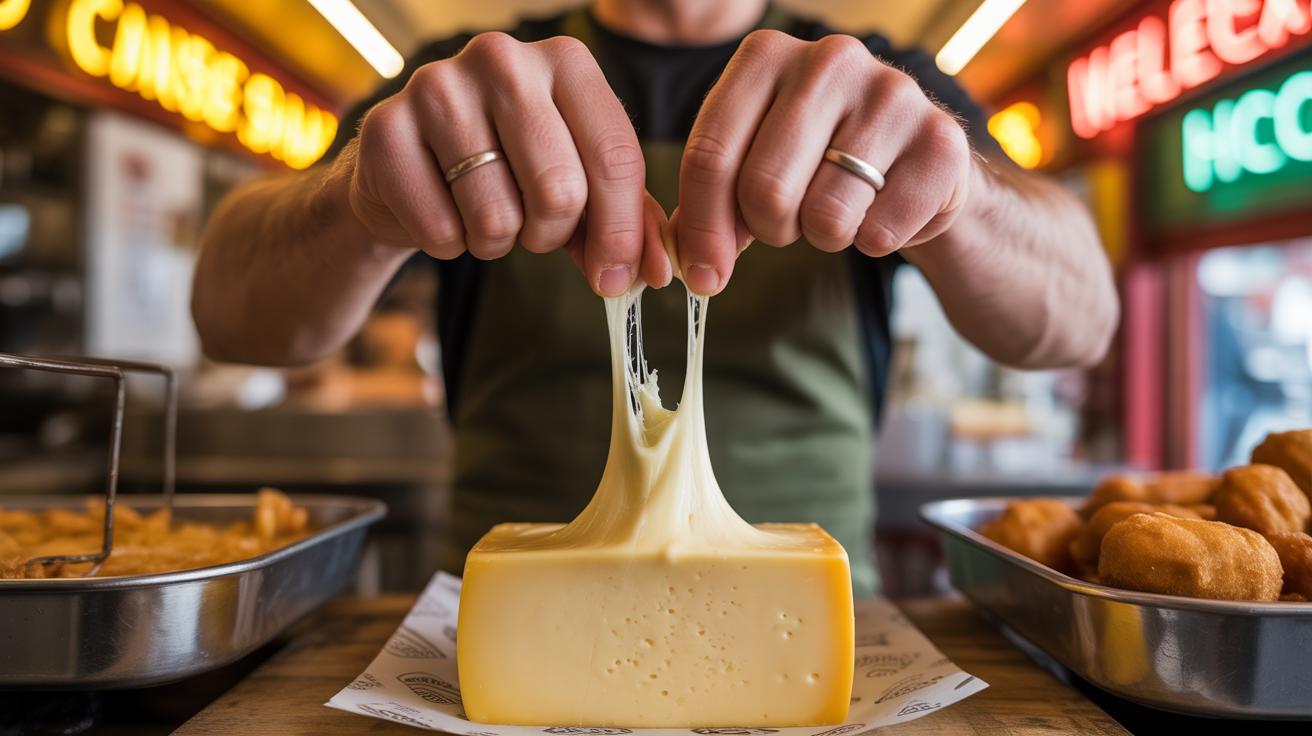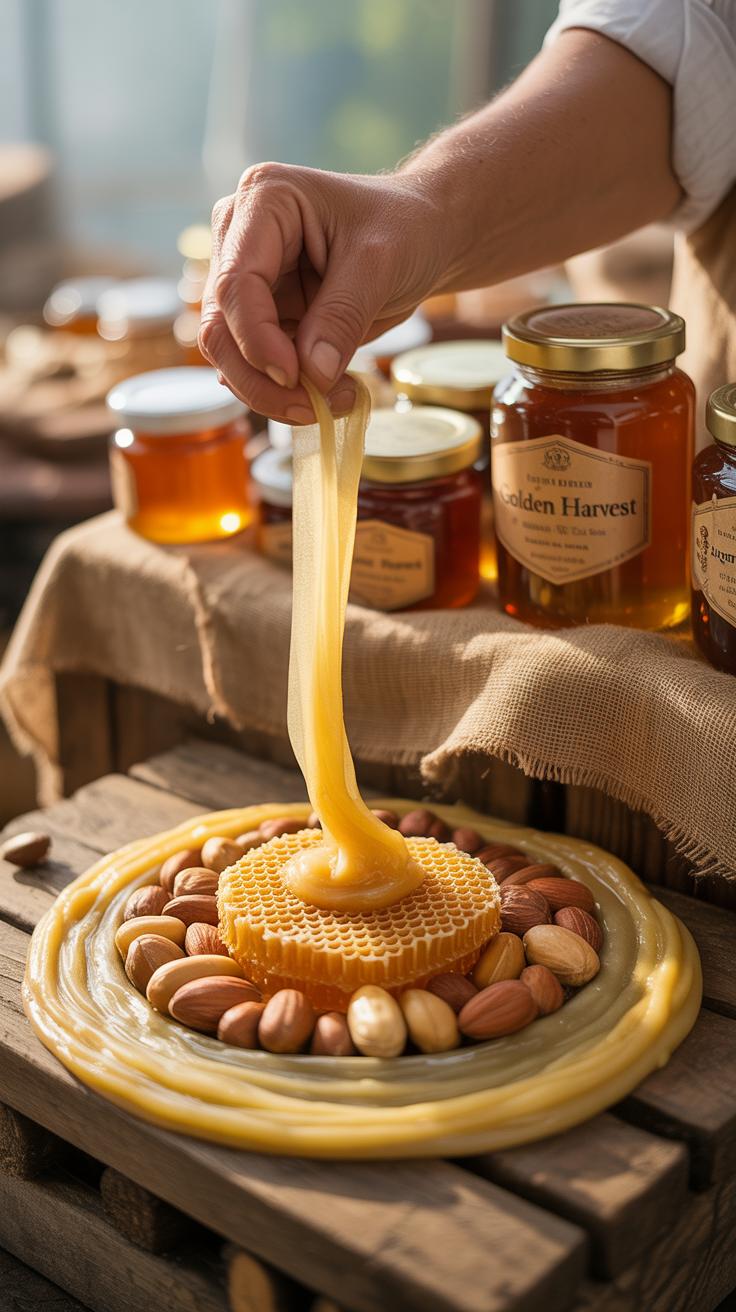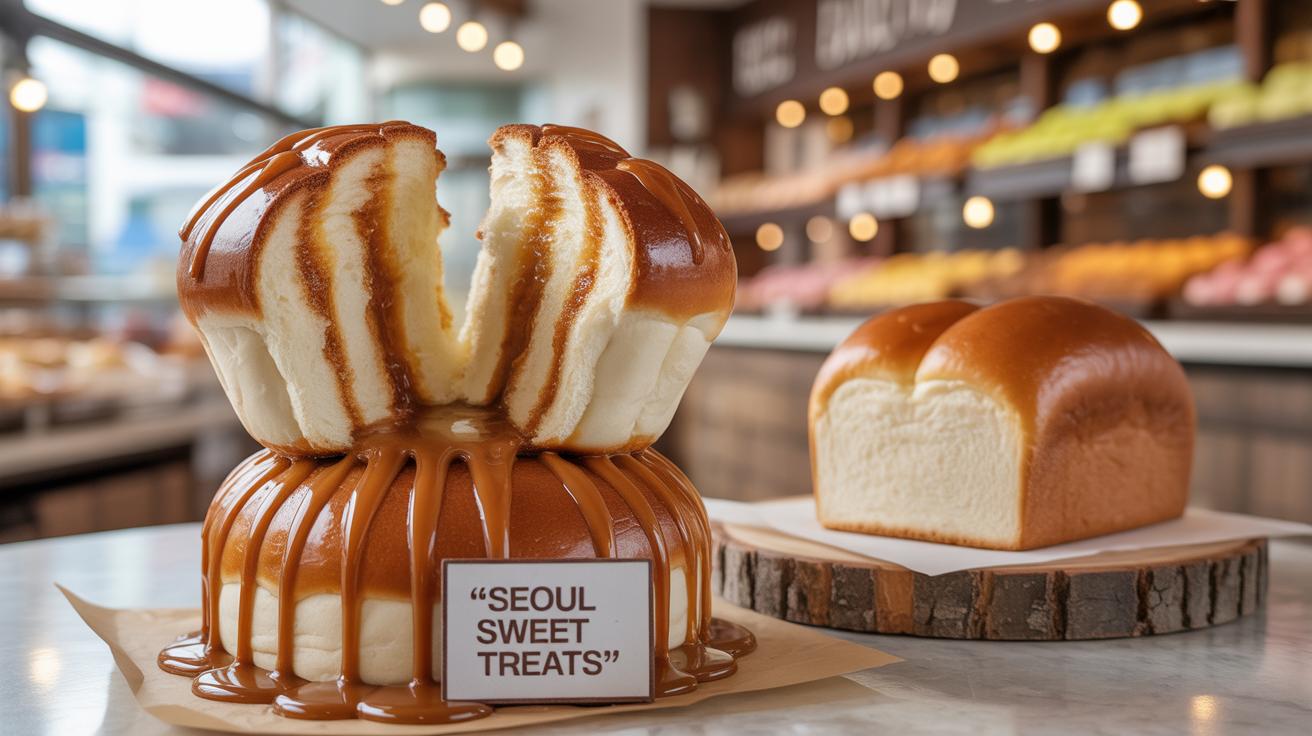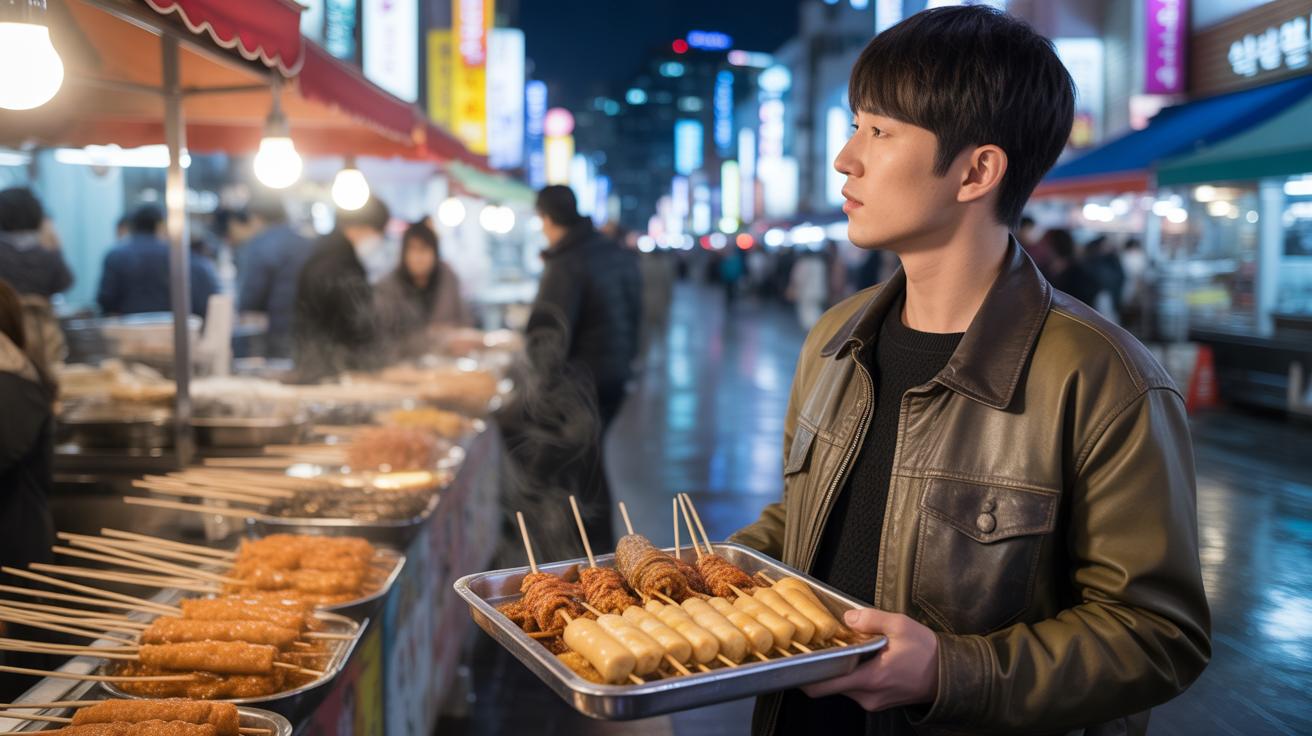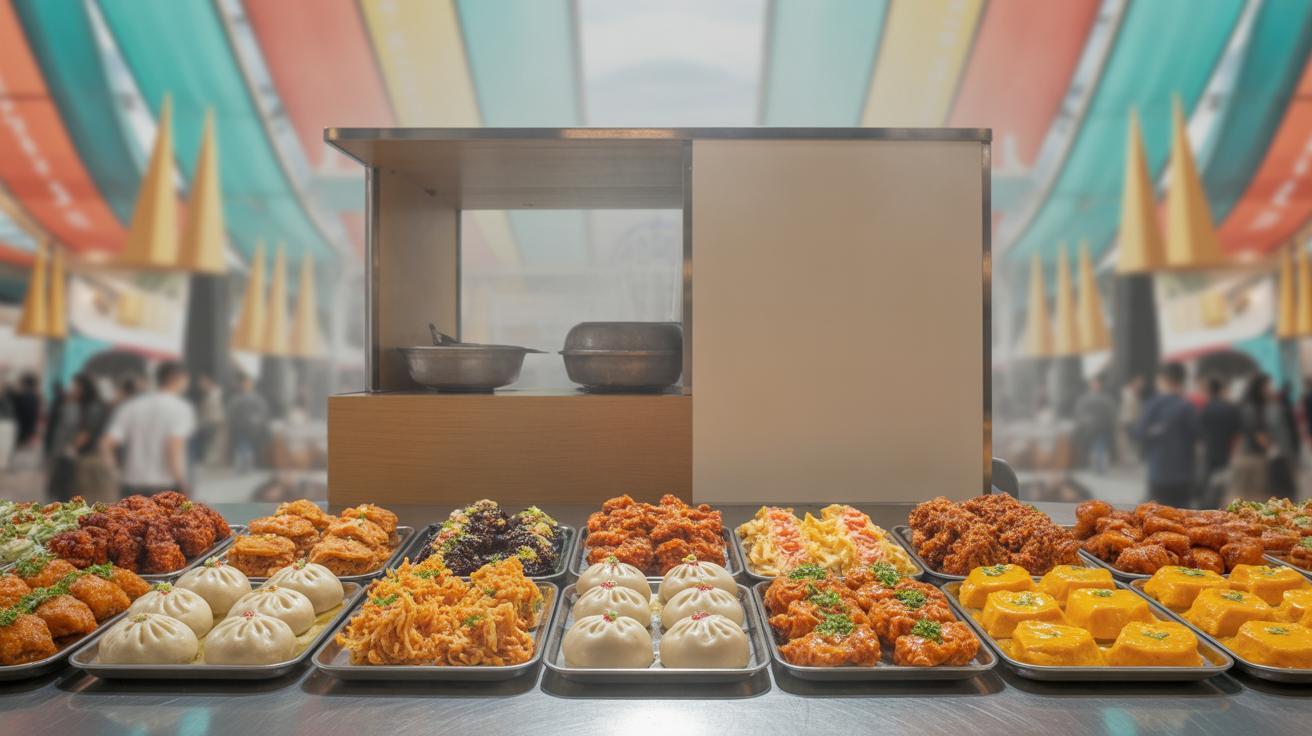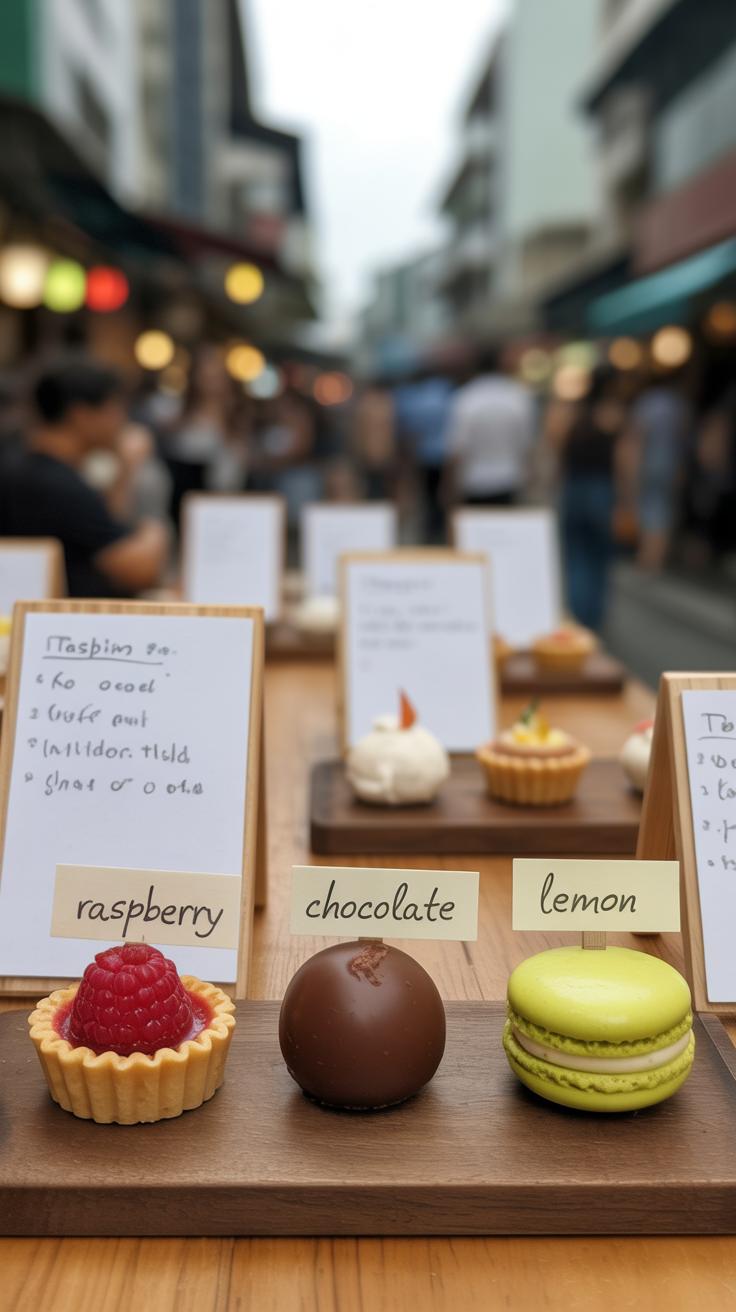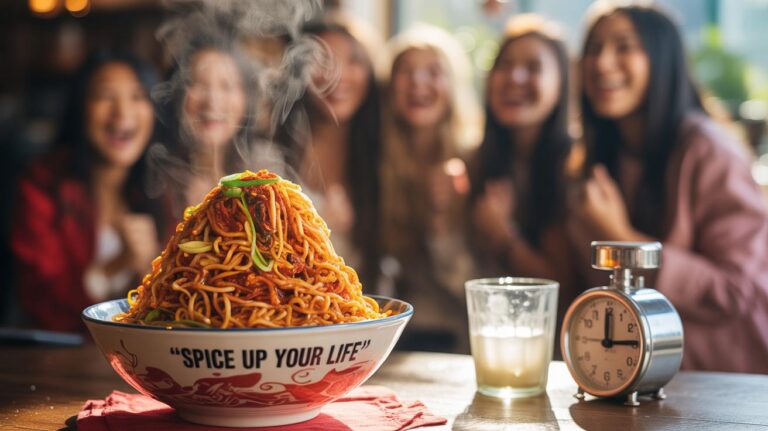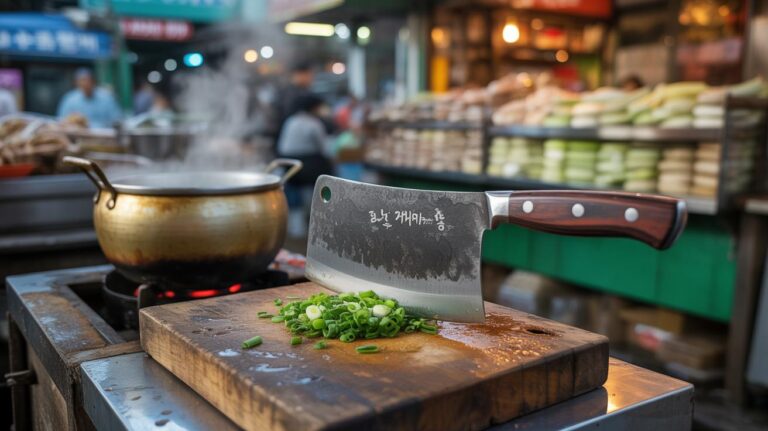Introduction
Discover the delightful flavors of Korean desserts found in vibrant street markets. Korean dessert ideas offer a mix of history, flavor, and culture, making them a must-try for anyone exploring Korean cuisine.
From traditional treats made with rice and honey to innovative sweets inspired by global trends, Korean street desserts provide a unique taste adventure. This article explores these options to help you enjoy the best Korean desserts.
Overview of Traditional Korean Desserts
Traditional Korean desserts often surprise those unfamiliar with their delicate flavors and simple ingredients. They’re not overwhelmingly sweet as Western desserts tend to be, but have a subtler sweetness, sometimes earthy or nutty, which grows on you. Many of these treats center around natural ingredients rather than refined sugars or heavy creams.
Common staples include various grain flours, honey, and rice products. For example, tteok, or rice cakes, appear in many forms—steamed, pounded, or pan-fried—and offer different textures depending on their preparation. There’s often a quiet elegance to how these desserts balance taste with texture.
Culturally, these desserts carry more weight than just satisfying a craving. They often appear during festivals, ancestral rites, and important family gatherings. They link the present to the past, connecting people to their heritage and nature’s cycles. It’s hard not to sense a subtle respect for tradition in each bite, even if the modern street market versions add a playful twist.
Common Ingredients in Traditional Desserts
When you dig into traditional Korean sweets, certain ingredients pop up repeatedly. Grain flours like barley, millet, or wheat offer the base texture for many desserts. Rice flour, often from glutinous rice, is particularly popular for its chewy, sticky quality. You might find it in sweets like gyeongdan (rice balls) or in layered rice cakes.
Honey is a recurring sweetener, appreciated not just for its flavor but also its perceived health benefits. Surprisingly, sugar was less commonly used in older recipes, likely because it wasn’t as easily accessible. Instead, ingredients such as jocheong, a type of rice syrup, provide a gentle sweetness.
Sometimes, nuts and seeds—pine nuts, walnuts, sesame—are sprinkled into or atop these desserts, adding a crunchy contrast. Red bean paste also appears frequently, offering a creamy sweetness that’s not overpowering. You might wonder how these ingredients came together originally and why some combinations feel so natural.
Historical and Cultural Roots of Korean Desserts
Tracing the history of Korean desserts leads back through centuries of agricultural society and shifting culinary customs. Many recipes were shaped by what was locally available and what could be stored for long periods. Rice, being a central crop, naturally became a foundational ingredient.
These desserts also carry symbolic meanings. For example, sweets served during the Lunar New Year represent hopes for prosperity and happiness. During weddings or birthdays, specific rice cakes act as blessings for fertility or longevity. It’s as if every dessert holds a subtle message beyond its flavor.
Still, the role of these desserts has evolved. What was once reserved for special occasions now finds its way into daily life, thanks in part to street markets. They serve as quick treats, nostalgic bites, or introductions to cultural heritage for younger generations and visitors alike. Have you ever thought about how something so simple can hold so much unspoken history?
Exploring Hangwa Varieties in Street Markets
Different Types of Hangwa Found in Korean Street Markets
When you stroll through Korean street markets, Hangwa offers a quiet but rich counterpoint to more common sweets. These traditional confections mainly use natural ingredients like honey, rice flour, and nuts, but their textures and flavors vary surprisingly. Some are crispy, almost like brittle, while others melt with a certain chewiness that lingers longer than you expect. Each bite can feel like a little discovery, especially if you pay attention to subtle flavor notes—nutty, floral, or even faintly savory at times.
It’s common to find Hangwa displayed in neat bundles or small packages, inviting you to try different kinds without the rush. Often, you’ll see vendors offering samples, letting you taste the mild sweetness and chewy or crunchy textures before committing to a purchase.
Popular Types of Hangwa
- Yakgwa: A deep-fried honey cookie, Yakgwa is dense, sweet, and sticky. It has a rich, buttery aroma and a slightly chewy texture that surprises many first-timers. The oil used in frying gives it a crisp outer shell that softens toward the center.
- Gangjeong: These are puffed rice or grain snacks, usually coated with honey or syrup and sprinkled with sesame or nuts. Light but satisfyingly crunchy, Gangjeong offers a delicate sweetness and a brittle texture that feels almost airy when you bite into it.
- Dasik: Quite different from the others, Dasik is a pressed, tea-flavored cookie typically made from powdered grains or beans mixed with honey. Its subtle sweetness pairs with a dry, crumbly texture, and it often comes in elaborate shapes stamped with traditional patterns.
How Hangwa is Made and Served
Hangwa’s preparation requires a good deal of patience. For Yakgwa, the dough is shaped and deep-fried, then soaked in honey syrup that slowly soaks in, giving each piece its signature moistness and sweet aroma. Gangjeong starts by frying grains until they’re puffed, then those pieces get coated in a warm, sticky syrup, which hardens as it cools, creating that satisfying crunch.
Dasik involves pressing finely ground ingredients into molds for presentation, making it more delicate and less messy than the fried varieties. In markets, Hangwa is usually served in small, grab-and-go portions. Sometimes wrapped in simple paper, other times presented on small trays or plates if you’re lucky enough to find a nearby spot to sit. Trying these at the street markets lets you experience Hangwa not just as food but as a small cultural event, part tradition, part everyday treat.
Tteok Rice Cakes and Their Variants
Tteok, or Korean rice cakes, come in countless forms, textures, and flavors. These chewy, often subtly sweet treats dominate street markets, inviting you to explore their diverse shapes and tastes. What fascinates me is how tteok can be simple or elaborate—sometimes just steamed rice flour, other times filled with beans, nuts, or syrup. Preparation usually involves pounding or steaming glutinous rice flour until it reaches that characteristic chewy texture, but regional variations add layers of complexity.
People love carrying small packs of tteok as snacks while wandering through markets. They are filling but never heavy, which must be why vendors keep them so fresh and handy. I often find myself torn between different kinds, unable to resist trying them all, even if it’s a bit repetitive.
Types of Tteok You Will Find on the Street
Some types stand out more than others as you stroll through. Injeolmi is one—a soft, chewy rice cake dusted with roasted soybean powder, giving it a nutty flavor that feels earthy yet sweet. Then there’s Songpyeon, small half-moon shaped cakes traditionally eaten during the harvest festival, filled with sweetened sesame seeds, red beans, or chestnut paste. Their delicate bite and fragrant filling always catch my attention.
Baekseolgi, a plain white steamed rice cake, looks simple but offers a subtle sweetness and fluffy texture unlike any other. Unlike the chewy injeolmi, baekseolgi feels more tender and airy, almost like a mild, subtle dessert. It’s a reminder that tteok isn’t just one texture or flavor but a range that suits many palates.
Significance of Rice Cakes in Korean Culture
Tteok holds more than just culinary value—it’s woven tightly into Korean traditions and celebrations. Often served during birthdays, weddings, and ancestral rites, rice cakes symbolize good fortune and prosperity. For example, during Lunar New Year or Chuseok, families make and share songpyeon together, which many believe brings happiness.
What intrigues me is how tteok serves as a cultural bridge—eaten casually from street stalls or prepared ceremoniously at home. It’s a reminder of community ties and heritage that persists even in modern city life. So next time you find yourself eyeing that little stall, remember you’re not just tasting a dessert—you’re sampling a piece of Korea’s cultural story.
Bingsu and the Popularity of Shaved Ice Desserts
Bingsu is probably one of the most instantly recognizable Korean desserts you’ll find at street markets. It’s basically finely shaved ice piled high, but it’s far from plain. What makes it stand out is the way it’s topped and flavored, which varies quite a bit depending on the vendor and season.
Traditional versions often include sweetened red beans, condensed milk, and rice cakes, creating a simple but satisfying combination. One flavor that caught my attention was Injeolmi Sulbing—this one adds chewy, toasted soybean powder rice cakes that give a nutty twist. It feels old-school and refreshing at the same time.
In contrast, modern fruit-flavored bingsu ranges from strawberries to mangoes, or even exotic mixes. These colorful options draw you in just by looking at them, with bright piles of fresh fruit contrasting the snowy ice. Sometimes the toppings get fancy: nuts, syrups, or even ice cream make an appearance.
What keeps bingsu popular at street markets? For one, it cools you down on hot days better than anything else. The texture of the shaved ice is soft, almost creamy, making it easier to eat quickly. Presentation matters too—these desserts often come in clear bowls or cups, serving both taste and visual appeal. You might smell the sweet or nutty aromas even before you taste it, which makes the experience more immediate and engaging.
Maybe it’s this balance between simplicity and variety that draws people back again and again. Bingsu isn’t just about cooling off; it’s a moment of small joy that fits perfectly into busy city life.
Kkultarae and the Art of Honey Threads
Detailing Kkul-tarae: Origins, Preparation, and Enjoyment
Kkul-tarae is a fascinating Korean street dessert that might easily catch your eye with its delicate, fine strands resembling spun silk. This treat has roots tracing back to traditional Chinese honey skein candy, but it has become uniquely Korean through how it’s prepared and presented. The dessert consists of thin, almost web-like threads of honey-based sugar that are hand-pulled into thousands of fine strands. Often, a few nuts or bits of chocolate are tucked inside before it’s carefully wrapped around them, creating a sweet, textured treat that melts in your mouth.
Watching the vendor pull the honey threads is almost like watching a skilled artist at work. You can’t help but linger, curious about how such thin, fragile strands are made from what starts as a sticky lump of honey and maltose. It’s a quiet kind of charm—simple, yet captivating.
Making Honey Skein Candy: Process and Ingredients
The making of Kkul-tarae starts with boiling honey and maltose syrup until they reach just the right consistency. This sticky mass is then cooled on a marble slab, a key step to firm it up enough to pull. The vendor stretches and folds it repeatedly, until it breaks into thousands of delicate threads. It’s a labor-intensive process that demands both patience and skill, with the dough becoming thinner with every pull.
At some point, the vendor adds chopped nuts—often peanuts, walnuts, or almonds—or sometimes even small chunks of chocolate inside. Then, the strands wrap around these fillings, forming small, bite-sized bundles. Eating it is an experience in texture and flavor: crunchy nuts meet the silken threads, all enveloped in a subtle, sweet honey taste.
Cultural Background and Popularity in Markets
Kkul-tarae’s arrival in Korea is believed to be linked to cultural exchanges with China, possibly entering through trade routes or migratory communities. As it found new life in Korean street markets, it shifted from a rare delicacy to a popular snack, especially among children and tourists. It fits well into Korea’s vibrant street food scene where simple, handcrafted treats attract attention.
You’ll often find Kkul-tarae vendors setting up in busy market lanes or at festivals. The hands-on making process encourages interaction, making you want to try it on the spot. This dessert’s visual appeal—those golden threads shimmering under the streetlights—is part of its charm. Somehow, it feels old-fashioned yet still fresh, a sweet connection to history and craft that keeps people coming back.
Serving and Eating Korean Street Desserts
Typical Presentation Styles in Street Markets
When you approach a Korean street dessert stall, you’ll notice that presentation is all about convenience. Most treats come in small, portable packages—paper cups, wooden trays, or simple plastic containers. The goal is to make it easy for you to walk around while tasting something sweet. For example, hotteok, the filled pancakes, are often handed over on small plates with wooden skewers or forks. This setup lets you enjoy the warm, gooey inside without burning your fingers or dropping sticky syrup everywhere, which I imagine could get messy quickly.
Other desserts like bingsu are typically served in disposable bowls with spoons, though they’re more of a sit-down dessert or shared among friends. Then there’s tteok, the chewy rice cakes, often stacked on toothpicks for easy snacking. Sometimes, sellers even offer little napkins or wet wipes. It’s practical, yes, but also a subtle way they encourage you to really savor it right then and there rather than taking it away for later.
How to Choose the Best Desserts for Your Taste
Picking Korean street desserts can feel overwhelming with so many textures and flavors. Here are a few tips if you want to find what suits you:
-
Think about texture first: Do you want something chewy like tteok, crunchy like yakgwa, or icy like bingsu? Each can offer a very different experience.
-
Consider flavor profiles: Korean sweets often balance subtle sweetness with nutty or earthy undertones—red bean, chestnut, and sesame show up a lot. If you prefer sweeter or lighter fare, look for honey-based or fruit-infused options.
-
Keep dietary preferences in mind: Many street desserts use rice, beans, and natural sweeteners, so they can be gluten-free or lower in fat. But some treats, especially fried ones, can be heavy, which might matter if you want a light snack rather than a small meal.
Honestly, I think the best way to choose is to try whatever catches your eye and be curious about unfamiliar ingredients. You might expect a dessert to be too sweet and then find it delightfully mild instead. So, trust a little experimentation—after all, that’s part of the fun of street food.
Modern Innovations in Korean Street Desserts
You might have noticed that Korean street desserts aren’t just about the classics anymore. The streets are buzzing with new takes that mix tradition with fresh ideas. Fusion desserts are everywhere, blending familiar Korean ingredients with flavors and styles from other cultures. Think of bungeoppang filled not just with sweet red bean paste but also with Oreo cream or cheesecake filling. Or the appearance of hotteok stuffed with nutella or pumpkin spice—that kind of twist is reshaping what we expect from street sweets.
There’s more than just new flavor combos. Presentation has changed too. Desserts now come with colorful sprinkles, layers of texture, or unexpected toppings like popping candy or matcha drizzle. It’s almost as if visual appeal matters as much as taste—probably because of Instagram. Young people especially love sharing these treats online, turning viral trends into real business.
Social media doesn’t just spread the word fast; it shapes what sellers create. Vendors often test experimental recipes based on what’s trending in Korea and abroad. The demand for unique, picture-worthy snacks pushes the market toward bolder, sometimes quirky mixes. Are these innovations making the desserts better? Sometimes yes, sometimes it’s just fun to try.
Getting the Most from Your Korean Dessert Experience
Best Places to Find Street Desserts in Korea
If you want to taste the best Korean street desserts, certain spots come to mind right away. Namdaemun Market in Seoul offers a bustling hub where sweet vendors line the streets with everything from hotteok to bungeoppang. Myeongdong’s narrow alleys are crowded but full of variety, and the aroma of freshly made rice cakes almost pulls you in before you see them.
Don’t overlook Gwangjang Market—while it’s famed for savory food, it’s also a solid place for traditional sweets. In Busan, Jagalchi Market mixes seafood with some interesting street treats. As for Jeonju, it’s famous for rice-based desserts reflecting local flavors. Each place feels a little different, so trying multiple markets lets you experience regional twists without even leaving Korea.
Tips for Enjoying Desserts Like a Local
Eating Korean street desserts isn’t a rushed affair; locals tend to savor each bite, especially since many desserts are just mildly sweet. Try pairing hotteok with a cup of sweet rice punch—it softens the sugar and balances flavors. Timing matters too. Many stalls get busier after dark, but sometimes early evenings mean shorter lines and fresher treats.
When eating, it’s natural to share your dessert with friends or family, often passing around small bites. Holding your dessert while walking is common, but if you want to truly appreciate texture and temperature, find a spot to sit down nearby. Also, chopsticks or a small fork might be offered. Using these rather than fingers helps you avoid sticky hands and shows a touch of local etiquette.
Have you noticed how some desserts come with a sprinkle of red beans or nuts? Don’t skip those toppings—they add an unexpected depth of flavor and texture that you might miss otherwise. Sometimes the simplest part of the dessert is what ties it all together.
Conclusions
Korean street desserts are a delicious reflection of Korea’s rich history and dynamic culinary culture. You can find options ranging from centuries-old traditional sweets to creative modern treats that appeal to all tastes.
Exploring these desserts offers more than just flavor; it provides insight into Korean culture and traditions. Trying these desserts in street markets gives you an authentic experience that connects you with the heart of Korea’s food scene.

